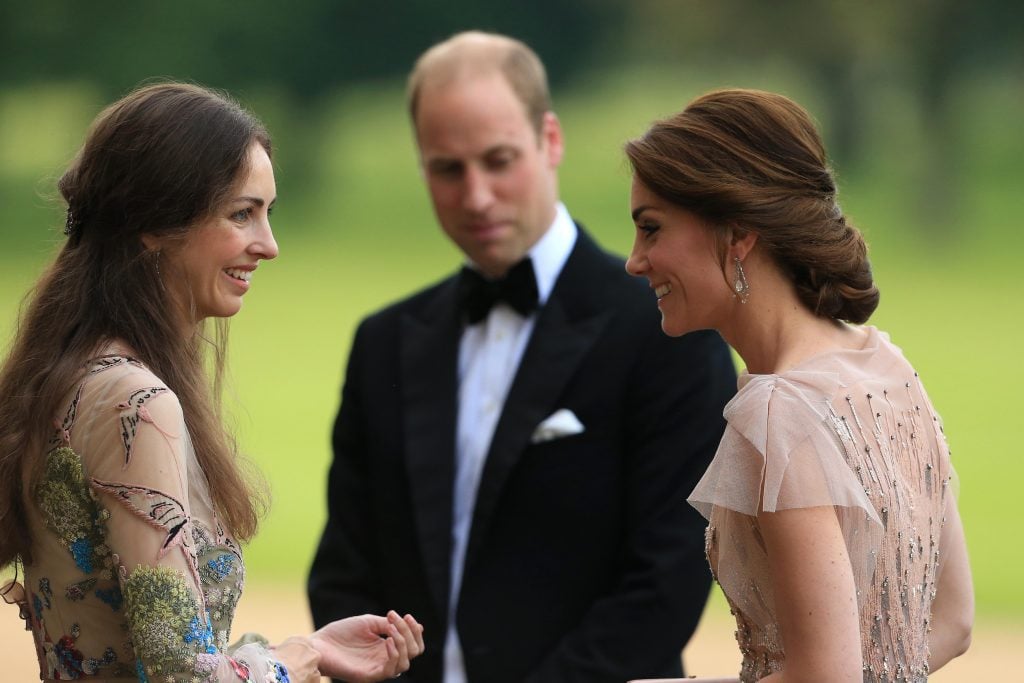Art World
Does Rose Hanbury, Prince William’s Rumored Paramour, Harbor Stolen Chinese Antiquities?
Chinese social media users have been scrutinizing the collection of the Marquess and Marchioness of Cholmondeley.

Chinese social media users have been scrutinizing the collection of the Marquess and Marchioness of Cholmondeley.

Brian Boucher

If you thought that public and media fascination about the whereabouts of Catherine Middleton, Princess of Wales, would not lead to questions about allegedly looted Chinese antiquities held by British royals, well, you were wrong. That is exactly what has happened.
Chinese social media has come alive with posts pointing out that goods furnishing the home of Rose Hanbury, the Marchioness of Cholmondeley, may have been illegitimately removed from China a century ago. The Marchioness has come in for scrutiny because she has been rumored to be in an amorous relationship with Kate’s husband, Prince William.
It all started when Princess Kate disappeared from public view after December 25, 2023; according to Kensington Palace, she is recovering from an unspecified abdominal surgery and will be in recovery until Easter. Royal watchers were already suspicious of this explanation when the royal family posted a photo showing Kate with her three children on social media for U.K. Mother’s Day that was clearly either doctored or created by A.I., giving rise to even more feverish speculation. Deepening many people’s suspicions about the royal family’s truthfulness, Getty Images then appended an editor’s note to another photo of the royal family in its database, saying it had been digitally enhanced.
Where does the Marchioness come in, you ask? Some speculate that Kate’s disappearance from public view is tied to a possible divorce resulting from the alleged affair with William (which the Marchioness’s press representatives, for the record, have denied).
So, due to the #KateGate / #WhereIsKate missing Kate Middleton / Princess of Wales #Katespiracy drama, lots of people around the world have increased interest in Rose Hanbury and her mysterious connection to Prince William.
Unfortunately, people in China looked a little too… pic.twitter.com/sGTfoIzkro
— Grannybelly 🌕 (@sugabelly) March 19, 2024
All this interest in the Marchioness of Cholmondeley (pronounced marsha-ness of Chumley) and her husband, the Marquess of Cholmondeley, whose name is David Rocksavage, has led to the resurfacing of photos of the pair in their home at Houghton Hall, in Norfolk, from earlier media profiles. In these photos, the couple is surrounded by Chinoiserie, specifically items that may have been misappropriated from China during the late Qing Dynasty, in the late 19th century by the fabulously wealthy Sassoon family. The Marquess inherited these items from the Sassoons, of which he is descended through his grandmother on his father’s side, Sybil Sassoon.
“For Chinese netizens, this is a great hurt,” said @cathychen95 on TikTok. “These culture relics not only represent the history and culture of our nation, but are also the wisdom and hard work of our ancestors, but they are being used as trophies to show off.”
The posts have shown up on popular social media platforms like Weibo and Douyin, the Chinese precursor to TikTok. One Douyin user, pointing out the Chinese screen, vases, and two-door cabinet decorating the couple’s home, said of the Marquess and Marchioness: “Their glory and wealth are built on the oppression of people in the third world.”

Screen grab from a video about the Marquess and Marchioness of Cholmondeley by by Douyin user 竹子君挖历史.
The Sassoon family, the so-called “Rothschilds of the East,” were the subject of an exhibition at New York’s Jewish Museum last year. They were a fabulously wealthy Baghdadi Jewish merchant clan that spread throughout the world to become one of the greatest dynasties of the 19th and 20th centuries. (Among the best known of the family today is the poet Siegfried Sassoon.)
When the British conquered China’s Qing Dynasty in the First Opium War, China opened Hong Kong and Shanghai ports to foreign trade and residency, and, New York Times critic Jason Farago pointed out, “by the 1870s [the Sassoons] had cornered the narcotics market to a degree Pablo Escobar would envy.” (The Forward, for its part, editorialized that in view of the damage opium wreaked on China, the family would be better compared to the Sacklers than the Rothschilds.)
The Sassoons brought home a great trove of Chinese artifacts, and it’s unclear which ones were purchased legitimately and which ones looted, as Time magazine pointed out, adding that the peak of their success there coincided with China’s “century of humiliation,” which involved a great deal of looting.
Several years ago, a crime wave saw thieves targeting Chinese art at Western museums, with some speculating that the Chinese government could be behind the thefts.